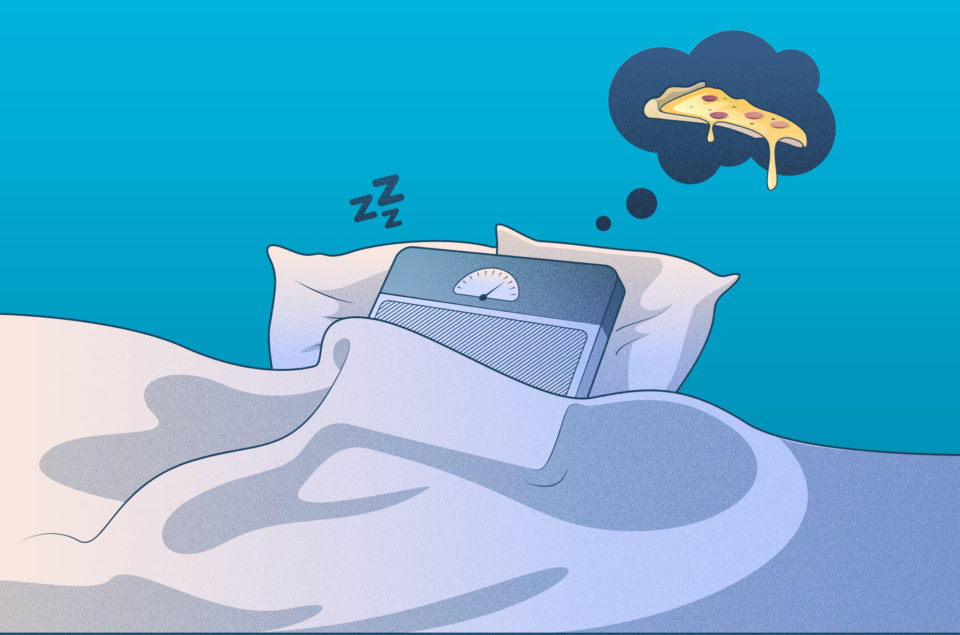Sleep is crucial for the healthy development of a child, but as most parents know, getting your child to sleep is not always easy. During the pre-school years, toddlers learning to eat solid food grow into school-aged children learning to read and write. And no matter how much we enjoy witnessing that development, it is also lined with challenges that come in all shapes and sizes.
When it comes to sleep, children are as individual and unique as adults. Some love sleeping, others don’t. And having a child that belongs to the latter can be demanding. As a clinical psychologist working with sleep problems in child healthcare, a researcher in the field of sleep treatment and a mother of three young children, I’ve spent a fair amount of time reflecting on the do’s and don’ts of getting a child to enjoy going to bed. Keep reading and you might find the key to making your own, and your child’s evenings more enjoyable.
How do you know if your child sleeps well?
We know that sleep is necessary for cognitive, emotional and physical health. However, it’s not always easy to know if our child sleeps well or not. When assessing child sleep in a clinical setting, we look at both sleep quantity (how many hours of sleep you get) and sleep quality (what those hours look like). In order to assess these factors, parents are often asked to fill out something called a sleep diary to track their child’s sleeping pattern, where timing of sleep and events that occur during the night are registered.
Regarding sleep quantity, for children aged between 3 to 5 years, the recommended amount of sleep duration is between 10 and 13 hours per night. However, is there a reason for concern if your child sleeps less, or more, than the recommended number of hours? Having a sleep duration of less than 8 hours or more than 14 hours for extended periods of time is not recommended at this age. Although it’s not necessarily unhealthy, a sleep duration far outside the normal range could be a reason for concern as it may produce, or result from, problems that could affect the child’s overall health and well-being. An excess in sleep duration could, for example, be the result of non-restorative sleep that should be addressed. It’s always advisable to consult your doctor if you have concerns regarding your child’s sleep.
A helpful way to determine if your child gets enough sleep is to look at how they function during the day. If your child (most of the time, at least) is happy, playful, curious and engaged in social interaction you can most likely assume that they are getting the sleep they need. Sleep deprived children tend to make themselves heard. Also, remember that they grow and develop new habits. As a parent, we need to be mindful of their needs when it comes to sleep, and adjust our parenting to their age.
But making sure your child gets good sleep is not only about the duration. The sleep quality of a child entails factors such as how long it takes to fall asleep, how many times he or she wakes up during the night and how long it takes to fall back asleep. What is considered appropriate, or not, for the age span (3 to 5 years) can be found in the table below:
| Appropriate for the age span (3-5 yrs) | Inappropriate for the age span (3-5 yrs) |
| It takes less than 30 minutes for the child to fall asleep. | It takes more than 45 minutes for the child to fall asleep. |
| The child wakes up only one time (or none) during the night. Short awakenings of less than 5 minutes do not count here. | The child sleeps less than 75% of the time spent in bed. This is calculated by dividing the time asleep by the total time spent in bed. |
| The time awake during the night is less than 20 minutes. | The child wakes up more than three times during the night. |
| The child sleeps at least 85% of the time spent in bed. This is calculated by dividing the time asleep by the total time spent in bed. | The time awake during the night is more than 50 minutes. |
| The child takes four or more naps during the day. |
Creating a sustainable bedtime routine
An evening or bedtime routine is the time when your child starts to wind down and prepare for bed. The routine can include different activities depending on your child’s (and your!) preference, but often contains brushing of teeth, getting into PJs, reading a book or listening to music.
The bedtime routine should ideally end with a kiss goodnight, lights out and the parent leaving the bedroom, letting the child fall asleep on their own. However, many parents (including myself tbh…) are OK lying next to their child until he or she falls asleep. (This does have other consequences which we’ll cover in a separate post). However, no matter how your child falls asleep, accompanied or not, a clear and consistent bedtime routine will set clearer expectations for your child and is beneficial for the whole family.
What are important considerations as you create a bedtime routine that works for you and your child?
- Regularity is key when it comes to sleep as our inner body rhythm will influence the variations of alertness and tiredness throughout the day and night. Keeping this rhythm at a steady pace will make it easier for the body and mind to prepare for sleep, making falling asleep easier. Make sure to put your child to bed at the same time (more or less, we all know how difficult this can be!) every evening. The actual timing will depend on your child: a child who needs 11 hours of sleep to function well, and needs to wake up at 7 a.m., should ideally be asleep by 8 p.m. This means that you should start your bedtime routine somewhere around 7 or 7.30. p.m.
- Consider having a bedtime routine chart with a visual representation of the different activities. Pointing to the chart can be helpful to avoid nagging and pictures make it easier for younger children to understand. Then, when your child asks for “just one more book”, you can refer to the chart stating a maximum of two books (or whatever number you’ve agreed upon). This will hopefully dodge some of the most common arguments between the child and parent at bedtime.
- Don’t forget to dim the lights and create a quiet and relaxing atmosphere around the child. Lowering the lights will signal to the body clock that bedtime is approaching and quiet activities, such as reading a book or listening to soothing music, will help the body and mind to wind down, making falling asleep easier.
- Ensuring your child isn’t hungry is important to ensure a good night’s sleep. For this reason, some parents like to include some sort of evening snack in the bedtime routine, such as a sandwich or porridge, depending on the preference of the child. At some ages, making kids eat a full, healthy meal at dinner is a challenge. An evening snack will ensure that being hungry is not affecting sleep.
- If you want to include reading a book in the routine, make sure you have a designated area for bedtime stories. Having a separate space for books that are not too long or complicated will ensure that you avoid arguing with your child about which book to read. If the bedtime routine chart states two books per night, stick to that. If your child gets anxious about you leaving the room at the end of the story, consider reading on the sofa instead of in bed.
- The bedtime routine should not be too long. Having an extensive routine that includes several steps will make it hard to follow in the evenings when you’re short on time. By limiting the routine to the most essential points (for example PJs, a small snack, cleaning their teeth and reading a book), you will have time for the whole routine even on stressful nights. And since consistency is important, especially with younger children, you don’t want to disrupt this too much.
And rest assured, reading the same book every night to a child who doesn’t want to sleep will not last forever. Soon enough, you will have to drag your teenager out of bed. Until then, holding on to a bedtime routine can be a way for yourself and your child to enjoy going to bed…At least sometimes!
Dr. Li Åslund, psychologist and sleep expert (and her latest reason for having poor sleep):











